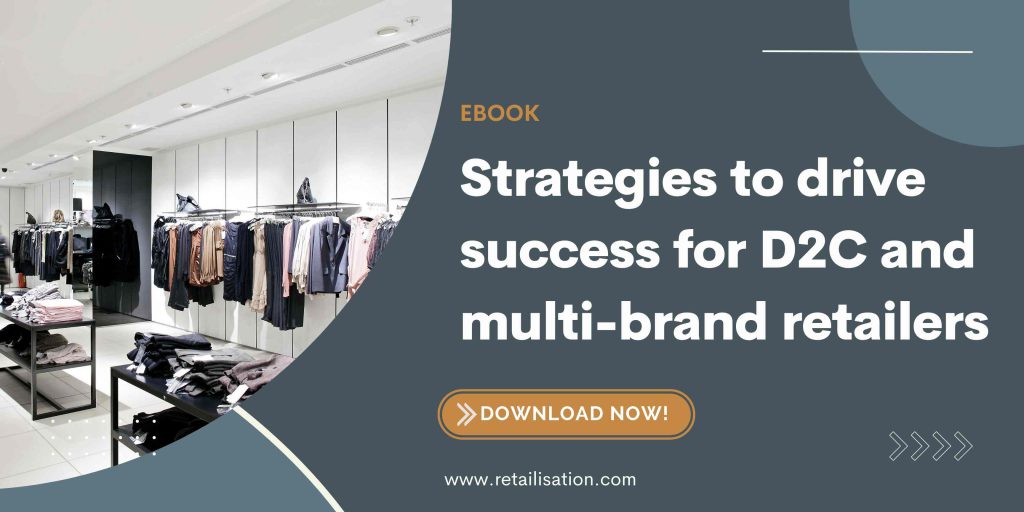What Is D2C And How Does This Model Work?
Some of the biggest brands in Fashion and Sportswear today are proudly ‘focusing on the consumer’ and offering Direct-to-Consumer (D2C) initiatives of increasing depth and breadth.
Brands that have succeeded in executing this kind of strategy have benefited from additional margins and a much closer relationship with their ideal customers. D2C gives brands the ability to leverage technology, agile production and nearshoring to sense and quickly adapt to consumer demands and produce limited quantities of hot products that sell.
However, as we’ll explore in this article, D2C isn’t the panacea it’s widely touted as being, and retailers still have a vital role to play in meeting consumer demand.
The advantages of a D2C model
The Direct-to-Consumer sales model has gained incredible popularity in recent years, providing advantages for both the brand and the consumer. The business model dovetails neatly with increased digitisation and the general shift towards more online shopping – predominantly via online marketplaces – as well as brand-specific apps and webshops.
The reasons why brands choose D2C are quite clear, consisting of:
- Keeping a better margin of total revenue – When the retailer is cut out, brands are able to save costs and take a bigger margin themselves. When brands target their most profitable items, they are able to control production so that it matches demand more closely.
- Control over the customer experience – Brands that sell directly to their end-customers can create and control customer experiences that reflect their brand identity and brand story.
- Knowledge of the customer via interaction and metrics – Increased digitisation has been a chief catalyst for the D2C model. As consumers more frequently make purchases via smartphones/other connected devices, it has become possible to get more insights into the drivers of customer behaviour.
- Marketing powered by a direct customer relationship – Not only can marketing campaigns be more tightly focused and well-designed, but they can also be delivered directly to the customer using the contact details and methods they have provided. This may be direct marketing via an app, email, SMS, social, or website, based on ultra-specific targeting campaigns.
D2C: great for brands, but bad for the retailer
While some of the biggest brands in fashion and sportswear are making significant gains thanks to their D2C initiatives, these gains are ultimately cannibalizing sales from the multi-brand retailers who find themselves cut out of the game like the proverbial ‘piggy-in-the-middle’. This can be seen from the clear inverse relationship between Nike’s increased D2C sales, and FootLocker’s projected decline in sales for 2022.
Multi-Brand Retailers (MBRs) have had to bear the costs of these ‘successes’, as margins and revenue shifts away from their physical and online stores to the brands themselves. Furthermore, MBRs miss out on exclusive deals, they lose the power of joint marketing activities, and the best-performing SKUs disappear from their inventories.
But all is not lost.
D2C isn’t capable of meeting the total consumer demand, and MBRs have distinct value to offer brands that cannot be achieved otherwise.
Why D2C alone isn’t the solution
Despite the big benefits for brands, a D2C model isn’t necessarily the perfect way of selling. While control of the customer experience is seen as a major benefit, brands lose control of the customer experience soon as the goods are passed to the last-mile delivery provider. As 36% of consumers experienced a shipping delay in 2020, this presents a strong risk that the brand cannot shield itself from.
As consumers have become accustomed to extremely high expectations of service provision (like free delivery, free returns, and next-day delivery), it is clear that they are fully exposed to these obligations, and the costs they incur.
When companies offer free returns, consumers are more likely to use ‘bracketing’ – where they buy several items and return the ones (for free!) that they don’t like after trying them out. While the biggest brands can absorb these costs, smaller brands may struggle to execute a successful D2C model because of this, and similar burdens. The technical challenges of managing fulfilment and returns may also start to shift the balance of cost vs. benefit for smaller brands.

